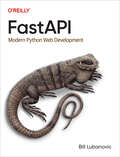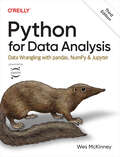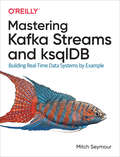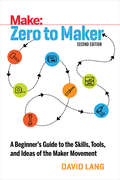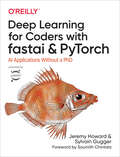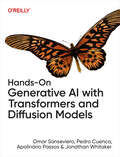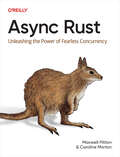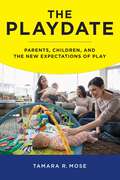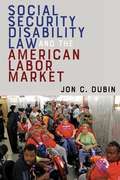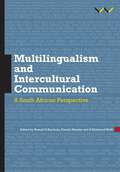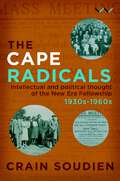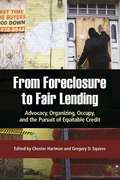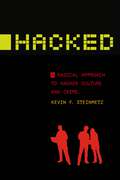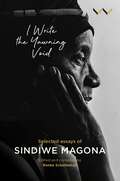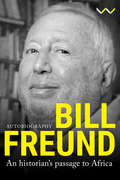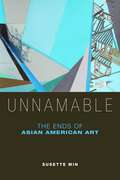- Table View
- List View
Effects of American Indian Treaties on Development and Operation of Transportation Facilities
by Matthew Adams Transportation Research Board National Academies of Sciences, Engineering, and Medicine Robert Randall National Cooperative Highway Research Program Thomas Sayre William Mumby Nicole Grigg Sara DutschkeTreaties with American Indian tribes played a central role in the development of the United States. While the “treaty era” of federal American Indian policy ended in the 1870s, the treaties themselves, the legal rights they convey, and the tribal governments entitled to exercise those rights all remain important and vital parts of the American legal landscape today. NCHRP Legal Research Digest 94: Effects of American Indian Treaties on Development and Operation of Transportation Facilities, from TRB’s National Cooperative Highway Research Program, notes that treaty obligations cannot be altered, nor reservations diminished, without express congressional authorization. That principle, in turn, raises important questions explored in this digest about planning, development, and operation of transportation infrastructure that crosses lands reserved by treaty.
Incorporating Shock Events into Aviation Demand Forecasting and Airport Planning
by Transportation Research Board National Academies of Sciences, Engineering, and Medicine Airport Cooperative Research Program Christopher Greer Ian KincaidThe COVID-19 pandemic has made clear the vulnerability of aviation and other industries to shock events. While the pandemic is one of the largest events to impact the aviation industry, other previous shock events have also exerted profound impacts on the aviation industry. ACRP Research Report 272: Incorporating Shock Events into Aviation Demand Forecasting and Airport Planning, from TRB’s Airport Cooperative Research Program, provides a methodology to assist airports in identifying and describing relevant shock events, understanding their potential impact on various aspects of the airport business, and developing approaches and strategies to enable the airport to better withstand and respond to shock events if they occur.
Airfield Vehicle Service Road Design and Operations
by Transportation Research Board National Academies of Sciences, Engineering, and Medicine Mark Richter Airport Cooperative Research ProgramIndustry guidance on the planning, operation, and design of airfield vehicle service roads (VSRs) is limited and dispersed across multiple documents. For that reason, VSR systems vary across the industry and are usually influenced by an airport’s unique operational demands, vehicle types, airfield and facility configurations, and other airport-specific characteristics. ACRP Synthesis 139: Airfield Vehicle Service Road Design and Operations, from TRB’s Airport Cooperative Research Program, describes planning, design, and operations for airfield VSR systems, including operations on apron, non-movement, and movement areas. The synthesis considers VSR issues such as maintaining the road, driver’s training, safety concerns, and operational challenges of VSR layouts.
Law Enforcement Use of Probabilistic Genotyping, Forensic DNA Phenotyping, and Forensic Investigative Genetic Genealogy Technologies: Proceedings of a Workshop
by Computer Science and Telecommunications Board Division on Engineering and Physical Sciences Division of Behavioral and Social Sciences and Education Committee on Law and Justice National Academies of Sciences, Engineering, and MedicineTo better understand key considerations around law enforcement use of advanced forensic DNA technologies, the Committee on Law and Justice and the Computer Science and Telecommunications Board at the National Academies of Sciences, Engineering, and Medicine held a workshop titled "Law Enforcement Use of Probabilistic Genotyping, Forensic DNA Phenotyping, and Forensic Investigative Genetic Genealogy Technologies." The workshop was organized in response to Executive Order 14074, issued in May 2022, and was held on March 13 and 14, 2024. The order focused on advancing effective, accountable policing, as well as criminal justice practices around algorithmic approaches to policing; it directed the National Academies to hold a workshop to explore the different approaches. The workshop focused on three specific advanced forensic DNA practices: probabilistic genotyping, forensic DNA phenotyping, and forensic investigative genetic genealogy. This publication summarizes the presentations and discussion of the workshop.
Effective Machine Learning Teams: Best Practices for ML Practitioners
by David Tan Ada Leung David CollsGain the valuable skills and techniques you need to accelerate the delivery of machine learning solutions. With this practical guide, data scientists, ML engineers, and their leaders will learn how to bridge the gap between data science and Lean product delivery in a practical and simple way. David Tan, Ada Leung, and Dave Colls show you how to apply time-tested software engineering skills and Lean product delivery practices to reduce toil and waste, shorten feedback loops, and improve your team's flow when building ML systems and products.Based on the authors' experience across multiple real-world data and ML projects, the proven techniques in this book will help your team avoid common traps in the ML world, so you can iterate and scale more quickly and reliably. You'll learn how to overcome friction and experience flow when delivering ML solutions.You'll also learn how to:Write automated tests for ML systems, containerize development environments, and refactor problematic codebasesApply MLOps and CI/CD practices to accelerate experimentation cycles and improve reliability of ML solutionsApply Lean delivery and product practices to improve your odds of building the right product for your usersIdentify suitable team structures and intra- and inter-team collaboration techniques to enable fast flow, reduce cognitive load, and scale ML within your organization
FastAPI: Modern Python Web Development
by Bill LubanovicFastAPI is a young yet solid framework that takes advantage of newer Python features in a clean design. As its name implies, FastAPI is indeed fast, rivaling similar frameworks in languages such as Golang. With this practical book, developers familiar with Python will learn how FastAPI lets you accomplish more in less time with less code.Author Bill Lubanovic covers the nuts and bolts of FastAPI development with how-to guides on various topics such as forms, database access, graphics, maps, and more that will take you beyond the basics. This book also includes how-to guides that will get you up to speed on RESTful APIs, data validation, authorization, and performance. With its similarities to frameworks like Flask and Django, you'll find it easy to get started with FastAPI.Through the course of this book, you will:Learn how to build web applications with FastAPIUnderstand the differences between FastAPI, Starlette, and pydanticLearn two features that set FastAPI apart: asynchronous functions and data type checking and validationExamine new features of Python 3.8+, especially type annotationsUnderstand the differences between sync and async PythonLearn how to connect with external APIs and services
Excel Cookbook: Recipes for Mastering Microsoft Excel
by Dawn GriffithsFilled with tips, tricks, and techniques, this easy-to-use book is the perfect resource for intermediate to advanced users of Excel. You'll find complete recipes for more than a dozen topics covering formulas, PivotTables, charts, Power Query, and more. Each recipe poses a particular problem and outlines a solution that you can put to use right away—without having to comb through tutorial pages. Whether you're a data analyst, project manager, or financial analyst, author Dawn Griffiths directs you straight to the answers you need. Ideal as a quick reference, Excel Cookbook is also perfect for learning how to work in a more efficient way, leading to greater productivity on the job. With this book, you'll jump in and get answers to your questions—fast. This cookbook shows you how to: Build compelling charts and use Sparklines, 3D Maps, and other visualizations Use PivotTables to slice, dice, and summarize datasets Perform statistical and financial analyses using formulas, Forecast Sheets, the Analysis ToolPak, and more Master dynamic array functions such as SEQUENCE, TEXTSPLIT, and FILTER Use Power Query to import, shape, and combine datasets Create custom functions using LAMBDA formulas Use developer options to write VBA code and create custom UserForms
Python for Data Analysis: Data Wrangling with pandas, NumPy, and Jupyter
by Wes McKinneyGet the definitive handbook for manipulating, processing, cleaning, and crunching datasets in Python. Updated for Python 3.10 and pandas 1.4, the third edition of this hands-on guide is packed with practical case studies that show you how to solve a broad set of data analysis problems effectively. You'll learn the latest versions of pandas, NumPy, and Jupyter in the process.Written by Wes McKinney, the creator of the Python pandas project, this book is a practical, modern introduction to data science tools in Python. It's ideal for analysts new to Python and for Python programmers new to data science and scientific computing. Data files and related material are available on GitHub.Use the Jupyter notebook and IPython shell for exploratory computingLearn basic and advanced features in NumPyGet started with data analysis tools in the pandas libraryUse flexible tools to load, clean, transform, merge, and reshape dataCreate informative visualizations with matplotlibApply the pandas groupby facility to slice, dice, and summarize datasetsAnalyze and manipulate regular and irregular time series dataLearn how to solve real-world data analysis problems with thorough, detailed examples
Mastering Kafka Streams and ksqlDB: Building Real-time Data Systems By Example
by Mitch SeymourWorking with unbounded and fast-moving data streams has historically been difficult. But with Kafka Streams and ksqlDB, building stream processing applications is easy and fun. This practical guide shows data engineers how to use these tools to build highly scalable stream processing applications for moving, enriching, and transforming large amounts of data in real time.Mitch Seymour, data services engineer at Mailchimp, explains important stream processing concepts against a backdrop of several interesting business problems. You'll learn the strengths of both Kafka Streams and ksqlDB to help you choose the best tool for each unique stream processing project. Non-Java developers will find the ksqlDB path to be an especially gentle introduction to stream processing.Learn the basics of Kafka and the pub/sub communication patternBuild stateless and stateful stream processing applications using Kafka Streams and ksqlDBPerform advanced stateful operations, including windowed joins and aggregationsUnderstand how stateful processing works under the hoodLearn about ksqlDB's data integration features, powered by Kafka ConnectWork with different types of collections in ksqlDB and perform push and pull queriesDeploy your Kafka Streams and ksqlDB applications to production
Learning the vi and Vim Editors: Power and Agility Beyond Just Text Editing
by Arnold Robbins Elbert HannahAmong the text editors being used in the programming community, perhaps the most important family is vi and its derivatives. With this updated edition, Unix and Linux users will learn text editing basics for both vi and Vim ("vi improved") before moving on to advanced editing tools for each editor. Authors Arnold Robbins and Elbert Hannah cover the latest major releases of Vim, including 8.0 and 8.2.If you're a programmer or computer analyst, or you work with browsers or command-line interfaces, using Vim can speed up your work and make complex tasks easier. You'll examine multiwindow editing, global search and replacement, and power tools for programmers, and learn how to write interactive macros and scripts to extend the editor--all in the easy-to-follow style that's made this book a classic.Go beyond the basics to learn which vi commands fit your specific needsLearn advanced vi tools that shift most of the editing burden to the computerExplore Vim tools that provide major improvements over viExamine Vimâ??s multiwindow editing feature, a significant upgrade over viUse Vim scripts to customize and tailor Vim to your needsLook at Vim in modern GUI environments with Graphical Vim (gvim)See Vim in the broader programming milieu, including usingit as an IDE
Zero to Maker: A Beginner's Guide to the Skills, Tools, and Ideas of the Maker Movement
by David LangZero to Maker is part memoir and part how-to guidebook for anyone who is having thoughts like these:I feel like all I can do is write emails. I wish I had more hands-on skills even though I don't know what I would build...I have this one idea I've always wanted to make, but I don't know how to build it...I keep hearing about the "maker movement" but I'm not sure what that means or how I can join in...The book follows author David Lang's headfirst dive into the maker world and shows how he grew from an unskilled beginner to be a successful entrepreneur. You'll discover how to navigate this new community of makers, and find the best resources for learning the tools and skills you need to be a dynamic maker in your own right.The way we make things has changed. A new generation of tinkerers have emerged through online communities and powerful digital fabrication tools, and their creations are changing the world. This book follows the author's personal journey of transformation into a maker-entrepreneur. It is everyone's guide to combining inspiration and resources to effectively navigate this exciting new world.Lang reveals how he became a maker pro after losing his job and how the experience helped him start OpenROV, a DIY community and product line focused on underwater robotics. It all happened once he became an active member of the maker movement. Ready to take the plunge into the next Industrial Revolution? This guide provides a clear and inspiring roadmap.Take an eye-opening journey from unskilled observer to engaged makerLearn how to join this community, get access to tools and experts, and pick up new skillsUse a template for building a maker-based entrepreneurial lifestyle and prepare yourself for the careers of the futureThis book is for everyone who dreams of becoming a successful maker-entrepreneur. It not only satisfies the aspirational aspect but shows newcomers to the maker movement exactly how to join in.First published in 2013, this new edition features full-color photos and shares David's latest insights and experiences as he continues to grow as a maker entrepreneur and citizen scientist.
Deep Learning for Coders with fastai and PyTorch: Ai Applications Without A Phd
by Jeremy Howard Sylvain GuggerDeep learning is often viewed as the exclusive domain of math PhDs and big tech companies. But as this hands-on guide demonstrates, programmers comfortable with Python can achieve impressive results in deep learning with little math background, small amounts of data, and minimal code. How? With fastai, the first library to provide a consistent interface to the most frequently used deep learning applications.Authors Jeremy Howard and Sylvain Gugger, the creators of fastai, show you how to train a model on a wide range of tasks using fastai and PyTorch. You’ll also dive progressively further into deep learning theory to gain a complete understanding of the algorithms behind the scenes.Train models in computer vision, natural language processing, tabular data, and collaborative filteringLearn the latest deep learning techniques that matter most in practiceImprove accuracy, speed, and reliability by understanding how deep learning models workDiscover how to turn your models into web applicationsImplement deep learning algorithms from scratchConsider the ethical implications of your workGain insight from the foreword by PyTorch cofounder, Soumith Chintala
Hands-On Generative AI with Transformers and Diffusion Models
by Pedro Cuenca Omar Sanseviero Apolinário Passos Jonathan WhitakerLearn to use generative AI techniques to create novel text, images, audio, and even music with this practical, hands-on book. Readers will understand how state-of-the-art generative models work, how to fine-tune and adapt them to their needs, and how to combine existing building blocks to create new models and creative applications in different domains.This go-to book introduces theoretical concepts followed by guided practical applications, with extensive code samples and easy-to-understand illustrations. You'll learn how to use open source libraries to utilize transformers and diffusion models, conduct code exploration, and study several existing projects to help guide your work.Build and customize models that can generate text and imagesExplore trade-offs between using a pretrained model and fine-tuning your own modelCreate and utilize models that can generate, edit, and modify images in any styleCustomize transformers and diffusion models for multiple creative purposesTrain models that can reflect your own unique style
Async Rust
by Maxwell Flitton Caroline MortonAlready popular among programmers for its memory safety and speed, the Rust programming language is also valuable for asynchrony. This practical book shows you how asynchronous Rust can help you solve problems that require multitasking. You'll learn how to apply async programming to solve problems with an async approach. You will also dive deeper into async runtimes, implementing your own ways in which async runtimes handle incoming tasks.Authors Maxwell Flitton and Caroline Morton also show you how to implement the Tokio software library to help you with incoming traffic, communicate between threads with shared memory and channels, and design a range of complex solutions using actors. You'll also learn to perform unit and end-to-end tests on a Rust async system.With this book, you'll learn:How Rust approaches async programmingHow coroutines relate to async RustReactive programming and how to implement pub sub in async rustHow to solve problems using actorsHow to customize Tokio to gain control over how tasks are processedAsync Rust design patternsHow to build an async TCP server just using the standard libraryHow to unit test async RustBy the end of the book, you'll be able to implement your own async TCP server completely from the standard library with zero external dependencies, and unit test your async code.
The Playdate: Parents, Children, and the New Expectations of Play
by Tamara R. MoseA playdate is an organized meeting where parents come together with their children at a public or private location to interact socially or “play.” Children no longer simply “go out and play,” rather, play is arranged, scheduled, and parentally-approved and supervised. How do these playdates happen? Who gets asked and who doesn’t? What is acceptable play behavior? In The Playdate, Tamara R. Mose focuses on the parents of young children in New York City to explore how the shift from spontaneous and child-directed play to managed and adult-arranged playdates reveals the structures of modern parenting and the new realities of childhood. Mose argues that with the rise of moral panics surrounding child abuse, pedophilia, and fears about safety in the city, as well as helicopter parenting, and over-scheduling, the playdate has emerged as not just a necessity in terms of security and scheduling, but as the very hallmark of good parenting.Based on interviews with parents, teachers, childcare directors, and nannies from Brooklyn, Manhattan, Queens, and Long Island, the book provides a first-hand account of the strategies used by middle-class parents of young children to navigate social relationships—their own and those of their children. Mose shows how parents use playdates to improve their own experiences of raising children in New York City while at the same time carefully managing and ensuring their own social and cultural capital. Mose illustrates how the organization of playdates influences parents’ work lives, friendships, and public childrearing performances, and demonstrates how this may potentially influence the social development of both children and parents. Ultimately, this captivating and well-researched book shows that the playdate is much more than just “child’s play.”Tamara Mose on The Brian Lehrer Show
Social Security Disability Law and the American Labor Market
by Jon C. DubinHow social security disability law is out of touch with the contemporary American labor market Passing down nearly a million decisions each year, more judges handle disability cases for the Social Security Administration than federal civil and criminal cases combined. In Social Security Disability Law and the American Labor Market, Jon C. Dubin challenges the contemporary policies for determining disability benefits and work assessment. He posits the fundamental questions: where are the jobs for persons with significant medical and vocational challenges? And how does the administration misfire in its standards and processes for answering that question? Deploying his profound understanding of the Social Security Administration and Disability law and policy, he demystifies the system, showing us its complex inner mechanisms and flaws, its history and evolution, and how changes in the labor market have rendered some agency processes obsolete. Dubin lays out how those who advocate eviscerating program coverage and needed life support benefits in the guise of modernizing these procedures would reduce the capacity for the Social Security Administration to function properly and serve its intended beneficiaries, and argues that the disability system should instead be “mended, not ended.”Dubin argues that while it may seem counterintuitive, the transformation from an industrial economy to a twenty-first-century service economy in the information age, with increased automation, and resulting diminished demand for arduous physical labor, has not meaningfully reduced the relevance of, or need for, the disability benefits programs. Indeed, they have created new and different obstacles to work adjustments based on the need for other skills and capacities in the new economy—especially for the significant portion of persons with cognitive, psychiatric, neuro-psychological, or other mental impairments. Therefore, while the disability program is in dire need of empirically supported updating and measures to remedy identified deficiencies, obsolescence, inconsistencies in application, and racial, economic and other inequities, the program’s framework is sufficiently broad and enduring to remain relevant and faithful to the Act’s congressional beneficent purposes and aspirations.
Multilingualism and Intercultural Communication: A South African perspective
by H. Ekkehard Wolff Russell H Kaschula Pamela Maseko Christine Anthonissen Bassey E AntiaAn in-depth look at the changing sociolinguistic dynamics that have influenced South African society. To date, there has been no published textbook which takes into account changing sociolinguistic dynamics that have influenced South African society. Multilingualism and Intercultural Communication breaks new ground in this arena. The scope of this book ranges from macro-sociolinguistic questions pertaining to language policies and their implementation (or non-implementation) to micro-sociolinguistic observations of actual language-use in verbal interaction, mainly in multilingual contexts of Higher Education (HE). There is a gradual move for the study of language and culture to be taught in the context of (professional) disciplines in which they would be used, for example, Journalism and African languages, Education and African languages, etc. The book caters for this growing market. Because of its multilingual nature, it caters to English and Afrikaans language speakers, as well as the Sotho and Nguni language groups _ the largest languages in South Africa [and also increasingly used in the context of South African Higher Education]. It brings together various inter-linked disciplines such as Sociolinguistics and Applied Language Studies, Media Studies and Journalism, History and Education, Social and Natural Sciences, Law, Human Language Technology, Music, Intercultural Communication and Literary Studies. The unique cross-cutting disciplinary features of the book will make it a must-have for twenty-first century South African students and scholars and those interested in applied language issues.
Cape Radicals: Intellectual and political thought of the New Era Fellowship, 1930s-1960s
by Crain SoudienThe history of a radical group of intellectuals who founded the New Era Fellowship, which shaped human rights precedents and social justice policy in South AfricaIn 1937 a group of young Capetonians, socialist intellectuals from the Workers’ Party of South Africa, embarked on a project they called the New Era Fellowship (NEF). In doing so they sought to disrupt and challenge not only prevailing political narratives but the very premises – class and ‘race’ – on which they were based. In different forums – public debates, lectures, study circles and cultural events – the seeds of radical thinking were planted, nurtured and brought to full flower. Taking a position of non-collaboration and non-racialism, the NEF played a vital role in challenging society’s responses to events ranging from the problem of taking up arms during the Second World War for an empire intent on stripping people of colour of their human rights to the Hertzog Bills, which foreshadowed apartheid in all its ruthless effectiveness. In subsequent narratives of liberation their significance has been overlooked, even disparaged, and has never been fully understood and acknowledged. By shining a contemporary light on the NEF and locating its contribution in current sociological and political discourse, educationist Crain Soudien shows how its members were at the forefront of redefining the debate about social difference in a racially divided society.
From Foreclosure to Fair Lending: Advocacy, Organizing, Occupy, and the Pursuit of Equitable Credit
by Edited by Chester Hartman and Gregory D. SquiresThis book informs a renewed movement for fair lending and fair housing. Leading advocates and specialists examine strategic initiatives to realize objectives of the federal Fair Housing Act as well as state and local lawsWell-known fair housing and fair lending activists and organizers examine the implications of the new wave of fair housing activism generated by Occupy Wall Street protests and the many successes achieved in fair housing and fair lending over the years. The book reveals the limitations of advocacy efforts and the challenges that remain. Best directions for future action are brought to light by staff of fair housing organizations, fair housing attorneys, community and labor organizers, and scholars who have researched social justice organizing and advocacy movements. The book is written for general interest and academic audiences.Contributors address the foreclosure crisis, access to credit in a changing marketplace, and the immoral hazards of big banks. They examine opportunities in collective bargaining available to homeowners and how low-income and minority households were denied access to historically low home prices and interest rates. Authors question the effectiveness of litigation to uphold the Fair Housing Act's promise of nondiscriminatory home loans and ask how the Consumer Financial Protection Bureau is assuring fair lending. They also look at where immigrants stand, housing as a human right, and methods for building a movement.
Hacked: A Radical Approach to Hacker Culture and Crime (Alternative Criminology #2)
by Kevin F. SteinmetzInside the life of a hacker and cybercrime culture. Public discourse, from pop culture to political rhetoric, portrays hackers as deceptive, digital villains. But what do we actually know about them? In Hacked, Kevin F. Steinmetz explores what it means to be a hacker and the nuances of hacker culture. Through extensive interviews with hackers, observations of hacker communities, and analyses of hacker cultural products, Steinmetz demystifies the figure of the hacker and situates the practice of hacking within the larger political and economic structures of capitalism, crime, and control.This captivating book challenges many of the common narratives of hackers, suggesting that not all forms of hacking are criminal and, contrary to popular opinion, the broader hacker community actually plays a vital role in our information economy. Hacked thus explores how governments, corporations, and other institutions attempt to manage hacker culture through the creation of ideologies and laws that protect powerful economic interests. Not content to simply critique the situation, Steinmetz ends his work by providing actionable policy recommendations that aim to redirect the focus from the individual to corporations, governments, and broader social issues. A compelling study, Hacked helps us understand not just the figure of the hacker, but also digital crime and social control in our high-tech society.
I Write the Yawning Void: Selected essays of Sindiwe Magona
by Sindiwe MagonaSindiwe Magona is a celebrated South African writer, storyteller and motivational speaker known mainly for her autobiographies, biographies, novels, short stories, poetry and children’s books. I Write the Yawning Void is a collection of essays that highlight her engagement with writing that span the transition from apartheid to the post-apartheid period and addresses themes such as HIV/Aids, language and culture, home and belonging. Magona worked as a teacher, domestic worker and spent two decades working for the United Nations in the United States of America. She has received many awards for her fierce and fearless writing ‘truth to power’. Her written work is often informed by her lived experience of being a black woman resisting subjugation and poverty. These essays bring to life many facets of Magona’s personal history as well as her deepest convictions, her love for her country and despair at the problems that continue to plague it, and her belief in her ability to activate change. They demonstrate Magona’s engaging storytelling and mastery of the essay form which serve as meaningful supplements to her fictional works, while simultaneously offering direct and insightful responses to the conditions that inspired them. Through her essays Magona offers a reimagining of a broken society and the role literature can play in casting new light on old wounds.
Bill Freund: An historian’s passage to Africa
by Bill FreundThe first biography of an eminent historian of South AfricaBill Freund, the late social historian and leading analyst of African history, passed away in 2020 soon after finishing his autobiography. Often described as the academy’s ‘outsider insider’, he was an eminent South African historian who published prodigiously in the areas of labour, capital and economic history. What influenced this American-educated academic to become such an astute and trusted observer of the political economy in Africa? We follow Bill’s intellectual journey from a modest Jewish home in Chicago in the 1950s to the Universities of Chicago, Yale, Ahmadu Bello University in Nigeria and Dar-es-Salaam, Tanzania, and finally to a permanent teaching position at the University of KwaZulu-Natal in Durban, South Africa. Peppered in between the commentaries on academic life are stories of his travels, poems he wrote for loved ones, and endearing anecdotes of friendships that shaped his life. As an ‘outsider’, both in the United States and abroad, he is able to offer rich insights into the world of Africanists and their scholarship on different continents. His thoughtful and balanced observations on late- and post-apartheid South Africa are especially interesting and refreshing. This posthumously published autobiography will give deeper insight into this unusual man and the world that shaped him – and which he in turn influenced through a deep commitment to rigorous scholarship. It includes a select bibliography of Bill Freund’s many publications as well as a foreword by Robert Morrell on the making of this autobiography.
Unnamable: The Ends of Asian American Art
by Susette MinRedraws the contours of Asian American art, attempting to free it from a categorization that stifles more than it reveals. Charting its historical conditions and the expansive contexts of its emergence, Susette Min challenges the notion of Asian American art as a site of reconciliation or as a way for marginalized artists to enter into the canon or mainstream art scene. Pressing critically on the politics of visibility and how this categorization reduces artworks by Asian American artists within narrow parameters of interpretation, Unnamable reconceives Asian American art not as a subset of objects, but as a medium that disrupts representations and embedded knowledge. By approaching Asian American art in this way, Min refigures the way we see Asian American art as an oppositional practice, less in terms of its aspirations to be seen—its greater visibility—and more in terms of how it models a different way of seeing and encountering the world. Uniquely presented, the chapters are organized thematically as mini-exhibitions, and offer readings of select works by contemporary artists including Tehching Hsieh, Byron Kim, Simon Leung, Mary Lum, and Nikki S. Lee. Min displays a curatorial practice and reading method that conceives of these works not as “exemplary” instances of Asian American art, but as engaged in an aesthetic practice that is open-ended. Ultimately, Unnamable insists that in order to reassess Asian American art and its place in art history, we need to let go not only of established viewing practices, but potentially even the category of Asian American art itself.
Building Institutional Capacity for Engaged Research: Proceedings of a Workshop
by Division of Behavioral and Social Sciences and Education Board on Science Education National Academies of Sciences, Engineering, and MedicineThe complex challenges facing society today call for new ways of doing research that bring researchers, policy makers, community leaders and members, industry stakeholders, and others together to identify evidence needs, contribute different kinds of knowledge and expertise, and use evidence to accomplish shared goals. Although momentum is building toward a research enterprise that more routinely enables and rewards this type of collaboration, the development of institutional capacities to support diverse forms of engaged research have not kept pace with the need for them. To explore opportunities for engaged and societally impactful scholarship, the Board on Science Education at the National Academies of Sciences, Engineering, and Medicine convened a workshop, Building Institutional Capacity for Engaged Research in Washington, D.C, held online on June 13 and 14, 2024. A diverse set of leaders and stakeholders from across the research ecosystem shared actionable ideas and innovations that participants could use for building institutional capacity for engaged research in their own in their own institutions and settings and proposed concrete ideas for coordination and capacity building to advance engaged research. This publication summarizes the presentations and discussion of the workshop.
Communicating a Balanced Look at Local Airport Activity and Climate Change
by Transportation Research Board National Academies of Sciences, Engineering, and Medicine Airport Cooperative Research Program Katie Franco Rosemary Barnes Dirk Singer David Weingart Frank BerardinoAs communities become more socially and environmentally conscious, there is growing awareness of some of the adverse impacts of aviation activity, including its contribution to climate change and the resulting social pressure to sometimes discourage air travel. ACRP Research Report 277: Communicating a Balanced Look at Local Airport Activity and Climate Change, from TRB’s Airport Cooperative Research Program, is a guide for airport practitioners to understand the relationships among their airport’s activity, economic benefits, and climate change. The guide offers rules of thumb to estimate these changes and effectively communication strategies that directly address the most common community concerns.


